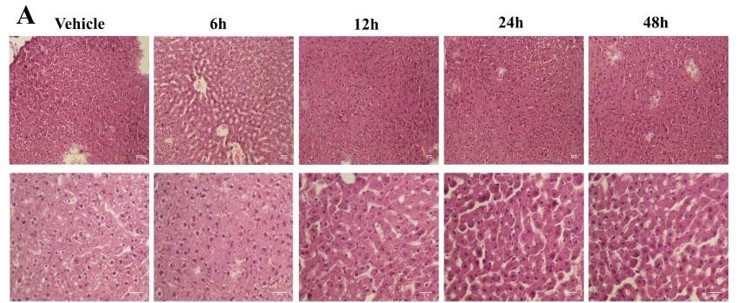lncRNA CASC7 contributes to the progression of LPS-induced liver injury by targeting miRNA-217/TLR4 axis
DOI:
https://doi.org/10.17305/bb.2024.10543Keywords:
Sepsis, liver injury, CASC7, miR-217, TLR4Abstract
It has been reported that long non-coding RNAs (lncRNAs) are involved in sepsis-induced liver injury, while the role of cancer susceptibility candidate 7 (CASC7) in liver injury induced by sepsis remains elusive. In our study, 62 patients and 55 healthy controls were enrolled from our hospital, from whom CASC7 and microRNA-217 (miR-217) in serum samples were detected by quantitative real-time PCR (qRT-PCR). Then the sepsis-induced liver injury mice model was established by lipopolysaccharide (LPS). The effect of CASC7 on liver injury induced by sepsis was confirmed by hematoxylin and eosin (HE) staining, ELISA assay, TUNEL assay, Annexin V-FITC apoptosis assay and cell counting kit-8 (CCK-8) assay, respectively. Besides, RNA pull-down, luciferase reporter gene assay, qRT-PCR, and western blot were used to evaluate the underlying mechanisms. In this study, lncRNA CASC7 was significantly increased while miR-217 was significantly decreased in patients with sepsis-induced liver injury compared with that in healthy controls. There was a negative association of CASC7 and miR-217 in serum samples from patients with sepsis-induced liver injury and healthy controls. CASC7 was upregulated in a time-dependent manner in liver tissues of LPS-treated mice. It was found that knockdown of CASC7 reduced the liver injury induced by LPS in mice. In vitro, LPS treatment enhanced cell apoptosis, while knockdown of CASC7 inhibited the role of LPS in cell apoptosis. Moreover, knockdown of CASC7 suppressed the LPS-enhanced tumor necrosis factor alpha (TNF-α) and interleukin 1 beta (IL-1β) expression. In addition, miR-217 was found to be a target of CASC7, and miR-217 mimic could reverse CASC7-promoted liver injury. Furthermore, toll-like receptor 4 (TLR4) was identified as the target of miR-217, and both CASC7 and miR-217 could downregulate the mRNA and protein level of TLR4. Additionally, TLR4 overexpression could reverse miR-217-inhibited or CASC7-promoted liver injury. Taken together, CASC7 contributes to the progression of LPS-induced liver injury via the miR-217/TLR4 axis.
Citations
Downloads

Downloads
Published
Data Availability Statement
License
Copyright (c) 2024 Chengqin Sun, Yan Chen, Zhonge Chen, He Wang, Weiwen Yang, Xiaoqian Zhou

This work is licensed under a Creative Commons Attribution 4.0 International License.









